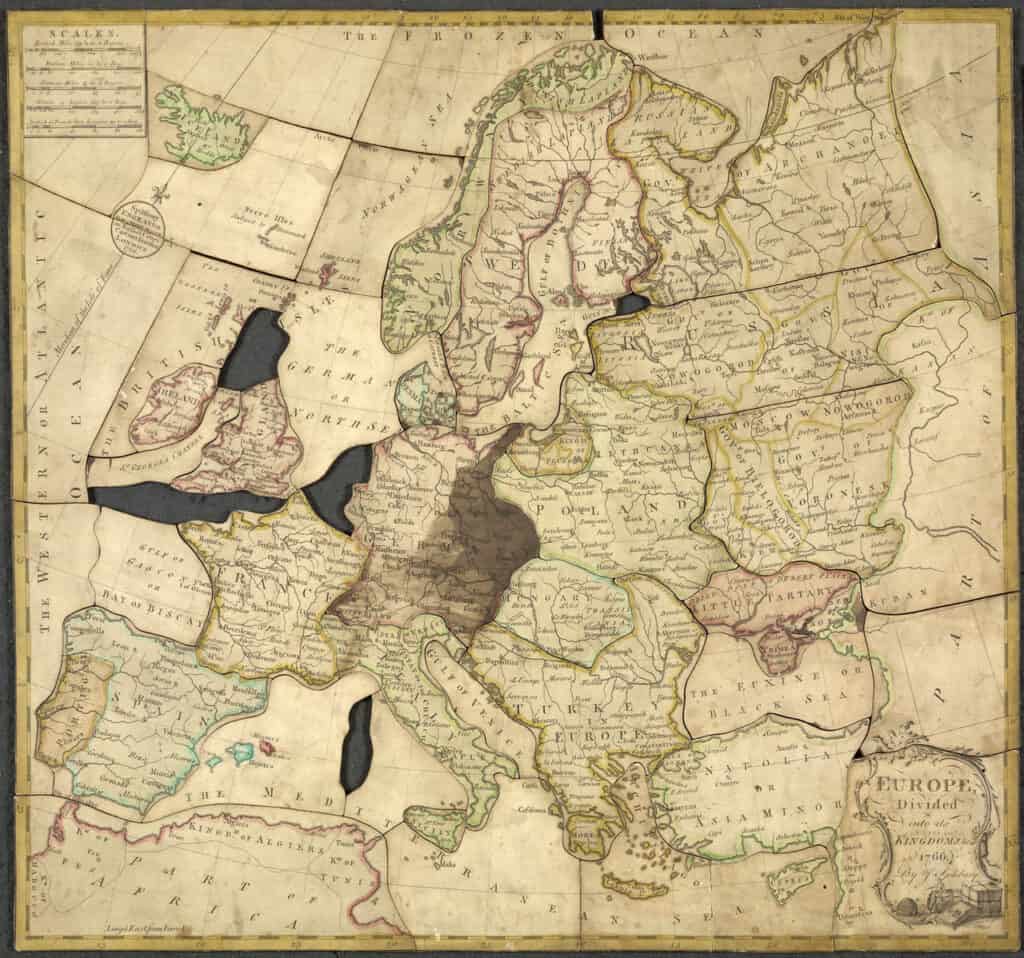The beginning of the success story of puzzles is closely linked to education. The urbanisation and industrial development of the 18th-century also led to new ideas in educational theory. One of the leading authorities in the field at the time was the philosopher John Locke, who argued that the use of various toys as learning tools could help to complement traditional teaching methods, enrich the learning experience and facilitate the engagement of ticklish students. Locke’s theory still lends credence to the fact that education and entertainment aka edutainment is a common concept today.
As the wealthy and influential wanted to give their children every possible competitive edge, such ideas attracted heightened interest. This helped to lay the foundations for the emergence of a corresponding market. As a natural continuation of these developments, the English cartographer John Spilsbury played an important role in popularising the first jigsaws. In the 1760s, he started printing world maps on mahogany plates and dissecting them. He branded his produce as “dissected maps” and marketed them as a geography teaching tool to the influential of the time. The most expensive of these could cost up to 21 shillings, when the average worker earned just 1 or 2 shillings a day. Cheaper, simplified versions were also often difficult for the working class to access, costing 5-7 shillings.
It is said that knowledge is power. The value of knowledge lies in its use to model reality. Thus, spatial thinking, hands on activities, erudition and other qualities have been highly valued throughout history, both morally and monetarily. Due to their educational, challenging, engaging and cognition enhancing nature, the first puzzles attracted the most attention and market share among the upper echelons of society and the intelligentsia at large. The King of England, George III, even had a special room to store his own collection of puzzles, which were used to teach his descendants. There are also many famous puzzle enthusiasts from recent history such as Albert Einstein, Queen Elizabeth, Stephen King, Hugh Jackman and many more.
Today, almost three centuries have passed since Spilsbury created his “dissected maps”. With the leaps and bounds of society and technology that have taken place in that time, the seemingly modest puzzles are still with us. Developing our young and sharpening our greats, testifying that there is genius in simplicity.
Gilboy, E. W. (1934). Wages in Eighteenth Century England. Cambridge: Harvard University Press.
Locke, J. (1989). Some Thoughts Concerning Education. Oxford: Clarendon Press.
Williams, A., D. (2004). The Jigsaw Puzzle: Piecing Together a History. The Penguin Group.

